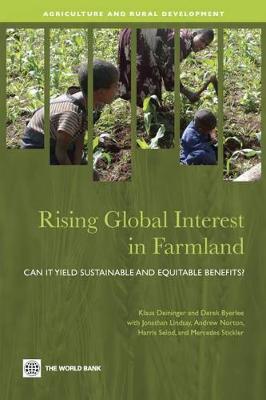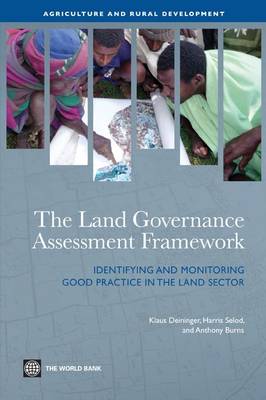Agriculture and Rural Development
2 total works
This book aims to provide key pieces of information needed for informed debate about large-scale land acquisition by drawing on the experience from past land expansions, discussing predictions for potential future demand, and providing empirical evidence of what is happening on the ground in the countries most affected by the recent increase in demand for land. It complements demand side considerations with a detailed assessment of the amount of land, whether currently cultivated or not, that might potentially be available for agricultural cultivation at the global and country levels. It then describes in some detail the policies in place to manage land acquisition processes and analyzes how these policies may affect outcomes.
This information can help governments in land abundant countries to assess how best to integrate increased demand for land into their rural development strategies and provide opportunities and benefits to all involved, including existing smallholders. This is particularly important as many of these countries also have high yield gaps. It also highlights how, in cases where land acquisition by large investors makes sense from a social, economic, and environmental perspective, governments can create an environment that can help to attract outside investment that contributes to broad-based growth and poverty reduction.
This information can help governments in land abundant countries to assess how best to integrate increased demand for land into their rural development strategies and provide opportunities and benefits to all involved, including existing smallholders. This is particularly important as many of these countries also have high yield gaps. It also highlights how, in cases where land acquisition by large investors makes sense from a social, economic, and environmental perspective, governments can create an environment that can help to attract outside investment that contributes to broad-based growth and poverty reduction.
The Land Governance Assessment Framework
by Klaus Deininger, Harris Selod, and Anthony Burns
Published 30 November 2011
Increased global demand for land posits the need for well-designed country-level land policies to protect long-held rights, facilitate land access and address any constraints that land policy may pose for broader growth. While the implementation of land reforms can be a lengthy process, the need to swiftly identify key land policy challenges and devise responses that allow the monitoring of progress, in a way that minimizes conflicts and supports broader development goals, is clear.
The Land Governance Assessment Framework (LGAF) makes a substantive contribution to the land sector by providing a quick and innovative tool to monitor land governance at the country level. The LGAF offers a comprehensive diagnostic tool that covers five main areas for policy intervention: Legal and institutional framework; Land use planning, management and taxation; Management of public land; Public provision of land information; and Dispute resolution and conflict management. The LGAF assesses these areas through a set of detailed indicators that are rated on a scale of pre-coded statements (from lack of good governance to good practice). While land governance can be highly technical in nature and tends to be addressed in a partial and sporadic manner, the LGAF posits a tool for a comprehensive assessment, taking into account the broad range of issues that land governance encompasses, while enabling those unfamiliar with land to grasp its full complexity. The LGAF will make it possible for policymakers to make sense of the technical levels of the land sector, benchmark governance, identify areas that require further attention and monitor progress. It is intended to assist countries in prioritizing reforms in the land sector by providing a holistic diagnostic review that can inform policy dialogue in a clear and targeted manner.
In addition to presenting the LGAF tool, this book includes detailed case studies on its implementation in five selected countries: Peru, the Kyrgyz Republic, Ethiopia, Indonesia and Tanzania.
The Land Governance Assessment Framework (LGAF) makes a substantive contribution to the land sector by providing a quick and innovative tool to monitor land governance at the country level. The LGAF offers a comprehensive diagnostic tool that covers five main areas for policy intervention: Legal and institutional framework; Land use planning, management and taxation; Management of public land; Public provision of land information; and Dispute resolution and conflict management. The LGAF assesses these areas through a set of detailed indicators that are rated on a scale of pre-coded statements (from lack of good governance to good practice). While land governance can be highly technical in nature and tends to be addressed in a partial and sporadic manner, the LGAF posits a tool for a comprehensive assessment, taking into account the broad range of issues that land governance encompasses, while enabling those unfamiliar with land to grasp its full complexity. The LGAF will make it possible for policymakers to make sense of the technical levels of the land sector, benchmark governance, identify areas that require further attention and monitor progress. It is intended to assist countries in prioritizing reforms in the land sector by providing a holistic diagnostic review that can inform policy dialogue in a clear and targeted manner.
In addition to presenting the LGAF tool, this book includes detailed case studies on its implementation in five selected countries: Peru, the Kyrgyz Republic, Ethiopia, Indonesia and Tanzania.

